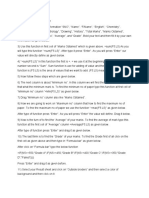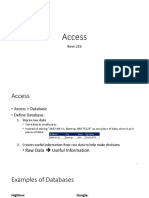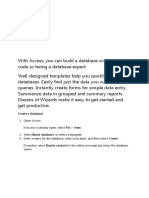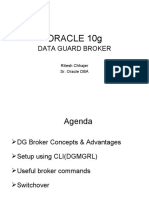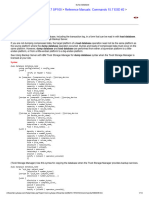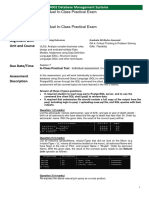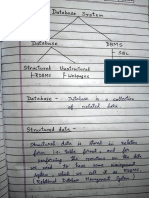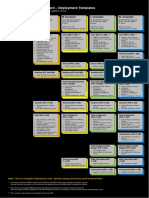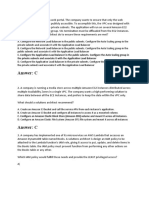0% found this document useful (0 votes)
4 views11 pagesExcel Access Lab Manual
The document is a lab manual for MS Excel and MS Access, detailing various exercises and procedures for data manipulation and analysis. It includes tasks such as filtering student data, creating pivot tables, generating charts, and designing tables in MS Access. Each section provides step-by-step instructions for completing the tasks effectively.
Uploaded by
piweloh571Copyright
© © All Rights Reserved
We take content rights seriously. If you suspect this is your content, claim it here.
Available Formats
Download as DOCX, PDF, TXT or read online on Scribd
0% found this document useful (0 votes)
4 views11 pagesExcel Access Lab Manual
The document is a lab manual for MS Excel and MS Access, detailing various exercises and procedures for data manipulation and analysis. It includes tasks such as filtering student data, creating pivot tables, generating charts, and designing tables in MS Access. Each section provides step-by-step instructions for completing the tasks effectively.
Uploaded by
piweloh571Copyright
© © All Rights Reserved
We take content rights seriously. If you suspect this is your content, claim it here.
Available Formats
Download as DOCX, PDF, TXT or read online on Scribd
/ 11






